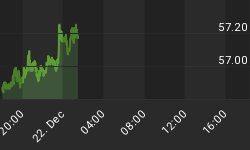A single chart of gold priced in the world's top 10 currencies, weighted for GDP...
ONE THOUSAND DOLLARS doesn't buy what it used to - not for non-US investors, at least.
Back in March 2008, when the Gold Price first broke $1,000 an ounce, the Euro equivalent peaked just shy of €660. Sterling investors here in the UK saw the price touch £515 an ounce.
Yes, both of those figures - like the USD gold price - were then new record highs. But come the next test of $1,000 per ounce, four months ago in Feb. 2009, the Euro price reached 20% higher to touch €795. The UK value-of-gold peaked 35% above that previous $1,000-equivalent, up at £700 per ounce.
Today, however, and with analysts watching for less than a 2% move in gold before it re-tests that $1,000 mark for the third time, Eurozone and British investors are well off the mark. February's all-time peaks in Euros and Sterling stand almost 15% higher from here.
All of which shows what exactly? First, anti-inflation and crisis insurance just got cheaper for European savers. So second, the $1,000 mark may not prove quite the hurdle it did in March '08 and again in Feb. this year.
But third, and most crucially, the volatile value of US Dollars - the No.1 reserve currency in central-bank vaults and foreign-trade agreements worldwide - is only growing more volatile still as 2009 unfolds.

Quite what this volatility means for the Dollar - now twice as volatile since March 2008 as its 35-year average - who can guess?
But to strip out the noise of Dollar up, Dollar down...and Dollar both up and down at once...the chart above may offer some help.
Updating BullionVault's number-crunching from Gold vs. the World (July 2008), it shows the daily gold price against each of the world's top 10 currencies, averaged by weight of the issuing economy (GDP) and indexed back to the start of Jan. 2000.
As you can see, the slide in Euro and Sterling gold prices since the last record peak hasn't yet made gold cheaper - in terms of all major world currencies - than it was at the first $1,000 breach. Nor has this decade's bull market to date mirrored just the decline of the Dollar, even if the last five weeks' rally has clearly been built on that trend.
The world's money en masse has shed nearly two-thirds of its value in gold since the start of 2000. And we guess here at BullionVault that strong, positive real rates of interest - after inflation - would be needed to reverse that loss of value in cash and cash-savings worldwide.















